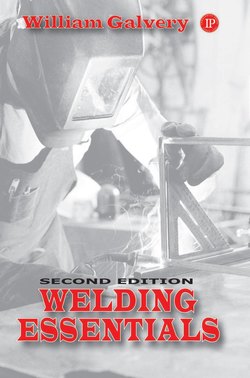Читать книгу Welding Essentials - William Galvery - Страница 8
ОглавлениеThe authors had the following objectives in mind when writing this book:
•Develop an easy-to-read, concise book with all the technical and safety information a beginning welder needs.
•Use a question-and-answer format to divide this information into small, easily understandable blocks.
•Provide illustrations to clarify and detail every explanation.
•Eliminate non-essential items to prevent overloading the reader.
•In a single chapter cover each major, commercially important process: oxyacetylene welding, oxyfuel cutting, brazing & soldering, SMAW, GMAW/FCAW, and GTAW/PAW.
•Describe less important welding processes in a survey chapter.
•Explain the effects of welding heat on metals.
•Present welding power supply and electrical safety issues.
•Introduce the beginning welder to weld inspection, welding symbols and qualification and certification issues.
Because this book initially did not provide much practical how-to-do-it advice in this expanded first edition we have added a chapter on fabrication and repair tips: assembling angle iron frames, repairing cracked heavy truck C-channels, and soldering copper tubing. These are relatively common tasks the welder will see and we want him to know how to do them.
We have not included torch manipulation instructions. This is a hands-on skill that is best learned from classroom demonstrations, personal instruction.
Although this book is primarily based on English measurement units, we have usually included metric units also.
| WILLIAM L. GALVERY, JR. | FRANK M. MARLOW |
| Costa Mesa, California | Huntington Beach, California |
